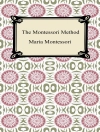This book is a fictionalized account of one teacher’s effort in applying process improvement principles to her teaching practices. Lisa’s story is based on actual practice, and resulted in an innovative application of the lean waste-elimination approach to classroom teaching and learning. It also resulted in Lisa completing the delivery of her entire curriculum in the school year in a way that allowed students to master the material, as evidenced by significant growth in student performance scores on the standardized achievement test in her content area.
The methods and tools described are based on proven lean techniques and sound education practice. Lean is a program of organizational improvement that empowers each and every worker in a school system—from student through superintendent—to increase his or her personal performance and job satisfaction through process improvement. Lean engages everyone in streamlining his or her work processes by identifying and eliminating the steps within each process that are wasteful, unnecessary, or do not contribute value to—and may even prohibit the person from doing or completing—the work. By incorporating a value-adding approach system-wide, schools can become more efficient in their operations and more effective at delivering their services, optimize the learning performance of all students, and create a culture of success and satisfaction for all.
Includes an introduction by Norman Bodek.
‘An inspiring story of how good management can work wonders in the classroom. Great, jargon-free examples of lean principles applied to the critically important work of teaching our children. This is a must-read for teachers and parents…Wonderful book and an enjoyable read!’ Dr. Peter Ward Richard Ross Chair in Management, Fisher College of Management, Ohio State University Chairman, LEAN Academic Network
‘The value of this book is demonstrating ultimately the process of continuous improvement applied to students in the classroom who see themselves as a team learning how to continuously improve upon an improvement process. It also demonstrates clearly how lean principles can be adapted to the classroom, because an educational system is replete with many “processes revolving around the delivery of instructional services.’ Dr. Mary Jane Guy Professor of Education Leadership Winona State University
‘After reading Optimizing Student Learning, I was so inspired to take a hard look at my classroom and how I could improve it. I took immediate steps to begin putting the information from the book into practice including, chunking the curriculum, utilizing short cycle assessment more effectively, and teaching basic study skills that can be used in all subject areas. I was amazed at the results…No matter where you are in your teaching career, this book has something to offer you. You owe it to yourself and your students to check it out for yourself. Although the premise of organization and pre-planning is a major theme in teacher preparation programs, the plan as put forth here is also designed to enhance teaching and learning for everyone.’ Melissa Unklesby Secondary School Teacher Beach City, Ohio
Об авторе
Joe is the director of operational excellence for a multinational company and has served as an executive business administrator and manager for over 25 years. During that time he has been involved in applying continuous improvement principles to every facet of the business operation. He is certified as a Lean Practitioner, Lean Master, and Lean Trainer, and has served as an enterprise lean executive for ten years. Joe initiated, coordinates, and leads his companywide lean efforts at the domestic and international levels, and serves as a peer lean auditor for a large number of major Minnesota companies. Joe is a veteran kaizen planner and facilitator, and continues to develop innovative methods, training courses, and materials for applying lean to establish and sustain a lean culture and to meet organizational needs. Joe particularly enjoys his work as a senior consultant in applying lean techniques and culture in the K–12 education industry. He is the author of “A Guide to Managing Daily Improvement” and coauthor of “Doing More with Less: Going Lean in Education.”












